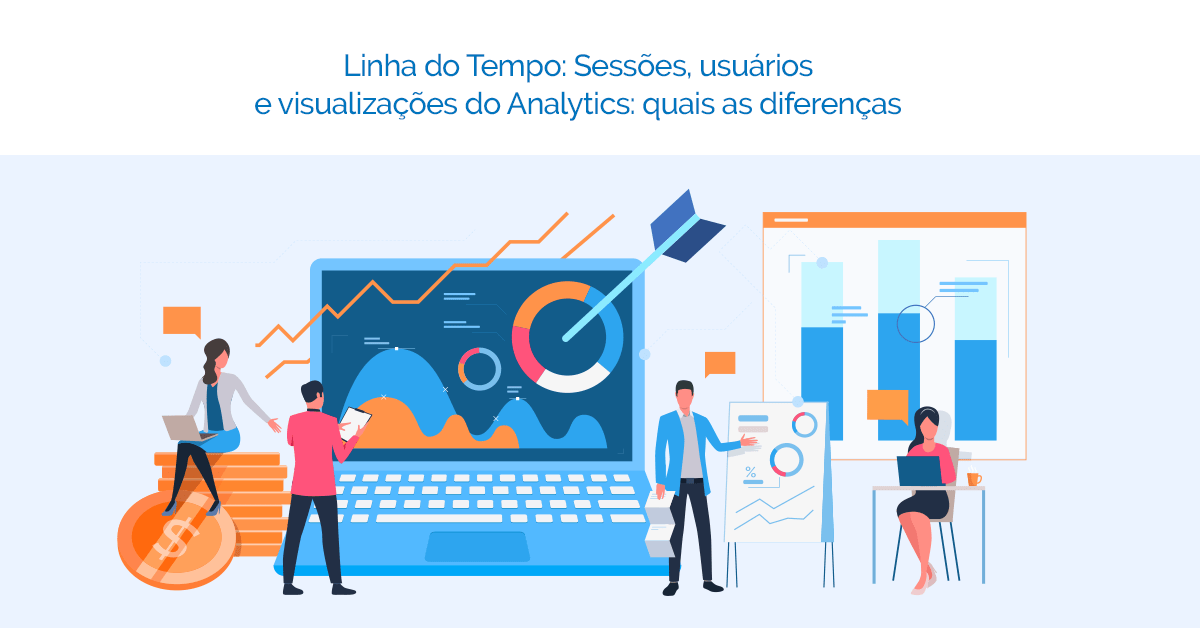Find out what the metrics sessions, users, and views mean in the Analytics report
It is expected that when opening the Google Analytics report, many people get confused with the metrics sessions, users, and views.
Although they are linked and are more effective when analyzed together, they do not mean the same thing and can even lead to wrong conclusions about their results when viewed in this way.
For this reason, we have prepared this article, especially to present the importance of this data for your website’s performance and to clear up your doubts once and for all about the difference between sessions, users, and views. Continue reading to check it out!
Sessions, users, and views: what are the differences between them?
Everyone knows that Google Analytics is an essential tool in the daily life of any marketer who works with websites.
After all, it is the one that presents us with the users’ behavior on the pages, facilitating the analysis of their profiles, traffic channels from where they came from, and the content they most access.
All of this generates inputs to always offer the best experience for these visitors. However, for this to happen effectively, the metrics need to be assessed accurately and in a complementary way.
At this moment, some people, especially those who are starting, get lost and end up confusing or not giving due importance to some of them, such as sessions, users, and page views.
Below, we have prepared a small guide to show these three data, how they work, and their relevance to a digital marketing strategy. Come on?
Sessions
Sessions are nothing more than the set of interactions that the user makes when visiting your site.
That is, when he views pages, interacts with their content, makes a purchase, or downloads an e-book, all these actions are counted by Google Analytics as a single session.
That way, a visitor can open multiple sessions on your website both on the same day and on different days, weeks, or months.
This session ends when the user leaves the site or when one of the following situations occurs:
- when the person opens a page and leaves it inactive for more than 30 minutes. Even if she returns later to continue interacting, a new session is opened after that time;
- when the clock strikes midnight and turns the day. Even if you are interacting with the content, another session will begin;
- every time the user enters through a campaign and then returns to the site with another campaign.
When analyzed together with the number of users and pageviews, this metric is critical for us to understand how much your visitors interact with your site.
Users
While the sessions are more related to behavior, the “users” metric gathers the number of visitors who arrived at your site and interacted with it.
That is, they are counted in a unique way and can hold multiple sessions over a period of time.
When they return to your site with a specific frequency, including the cookies stored in your browsers help identify them, and they start to be counted by Analytics as “active users.”
By tracking this data frequently, you can measure your visitors’ level of interest in your pages’ content.
Therefore, it is easier to know if your marketing strategy is working and what needs to be adjusted to attract and retain users.
Pageviews
also known as page views, this metric shows the total number of ideas that the pages of your website received in a given time.
Alone, this data cannot say much, because the same user can access several pages.
However, in the Google Analytics report for Reportei, we also show the metric “pages per visit,” which shows the average number of pages accessed per session.
When analyzed together with other data, this metric assists in users’ evaluation behavior and their actions on your website.
It is also worth remembering that Analytics goes far beyond the analysis of sessions, users, and views, and can offer a massive variety of information to improve your strategic digital marketing.
So, how about exploring more about this tool? Access our Google Analytics Guide and stay on top of all its metrics and features!





